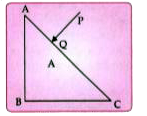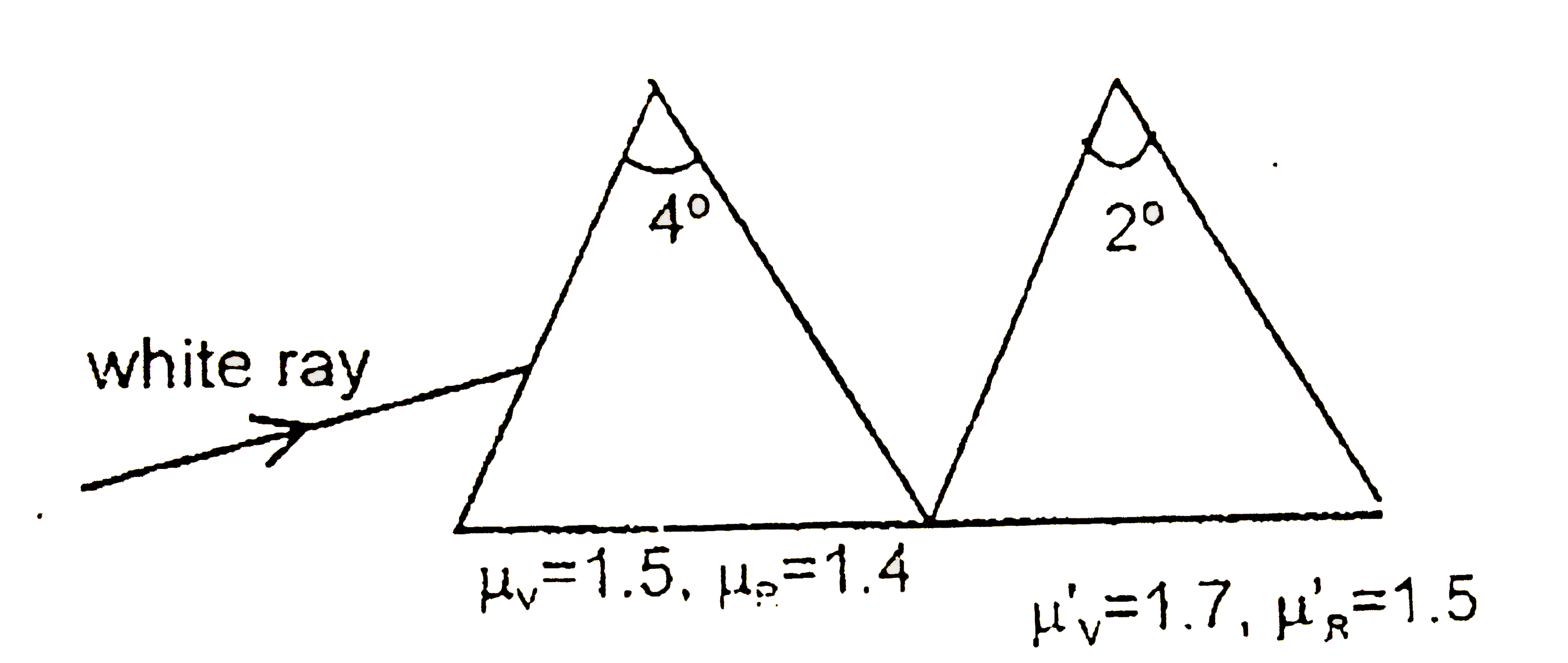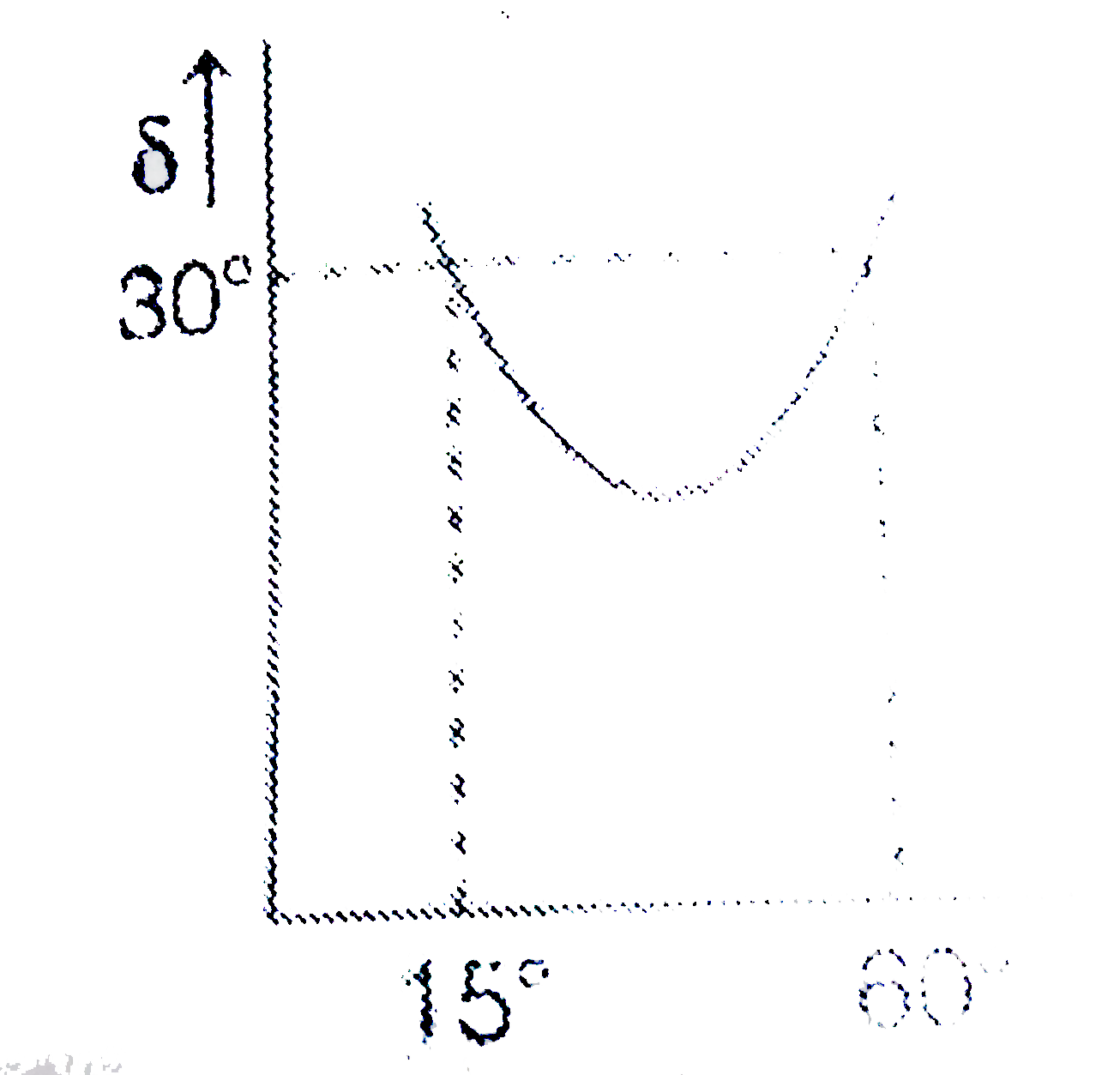True/False Type Questions
Q A large-angle prism deviates a light ray more.
more
less
equal to a small-angle prism
does not deviate at all
The correct Answer is:A
To determine whether a large-angle prism deviates a light ray more than a small-angle prism, we can analyze the relationship between the angle of the prism (A) and the angle of deviation (D).
1. Understanding the Prism: A prism bends light due to refraction. The amount of bending depends on the angle of the prism and the refractive indices of the materials involved.
2. Angle of Deviation: The deviation (D) of light passing through a prism is influenced by the angle of the prism (A). The relationship can be expressed as:
D=i+e−A
where i is the angle of incidence and e is the angle of emergence.
3. Maximum Deviation Condition: The maximum deviation occurs when the angle of incidence equals the angle of emergence (i = e). In this case, the deviation can be simplified to:
Dmax=2i−A
This indicates that as the angle of the prism (A) increases, the maximum deviation does not necessarily increase.
4. Effect of Increasing Prism Angle: If we increase the angle of the prism (A), we can observe the following:
- For a fixed angle of incidence (i), as A increases, the angle of deviation (D) can actually decrease after a certain point.
- This means that a larger angle prism does not always lead to a larger deviation.
5. Conclusion: Therefore, it is not true that a large-angle prism deviates a light ray more than a small-angle prism. In fact, increasing the angle of the prism can lead to a decrease in the angle of deviation after a certain point.
Final Answer:
False - A large-angle prism does not necessarily deviate a light ray more than a small-angle prism.
---
D=i+e−A
where i is the angle of incidence and e is the angle of emergence.
Dmax=2i−A
This indicates that as the angle of the prism (A) increases, the maximum deviation does not necessarily increase.
- For a fixed angle of incidence (i), as A increases, the angle of deviation (D) can actually decrease after a certain point.
- This means that a larger angle prism does not always lead to a larger deviation.
False - A large-angle prism does not necessarily deviate a light ray more than a small-angle prism.
Similar Questions
Knowledge Check
- Question 1 - Select One
A total reflecting equilateral prism can be used to deviate a ray of light through :
A30∘B60∘C75∘D90∘ - Question 2 - Select One
A total reflecting right angled isosceles prism can be used to deviate a ray of light through :
A30∘B60∘C75∘D90∘
Which of the two prisms, A made of crown glass and B made of flint glass, deviates a ray of light more ?
View SolutionA ray of light PQ is incident normally on the hypotenuse of a right angled prism ABC as shown in the diagram given below:
What is the value of the angle of deviation of the ray ?
 View Solution
View SolutionWrite a relation for the angle of deviation (δ) for a ray of light passing through an equilateral prism in terms of the angle of incidence (i1), angle of emergence (i2) ang angle of prism (A).
View SolutionA prism of a certain angle deviates the red and blue rays by 8∘ and 12∘ respectively. Another prism of the same angle deviates the red and blue rays by 10∘ and 14∘ respectively. The prisms are small angled and made of different materials. The dispersive powers of the materials of the prisms are in the ratio
View SolutionIf two prisms are combined , as shown in figure, find the total angular dispersion and angle of deviation suffered by a white ray of light incident on the combination.
 View Solution
View SolutionAngle of minimum deviation is equal to the angle prism A of an equilateral glass prism. The angle incidence at which minimum deviation will be obtained is
View Solution


